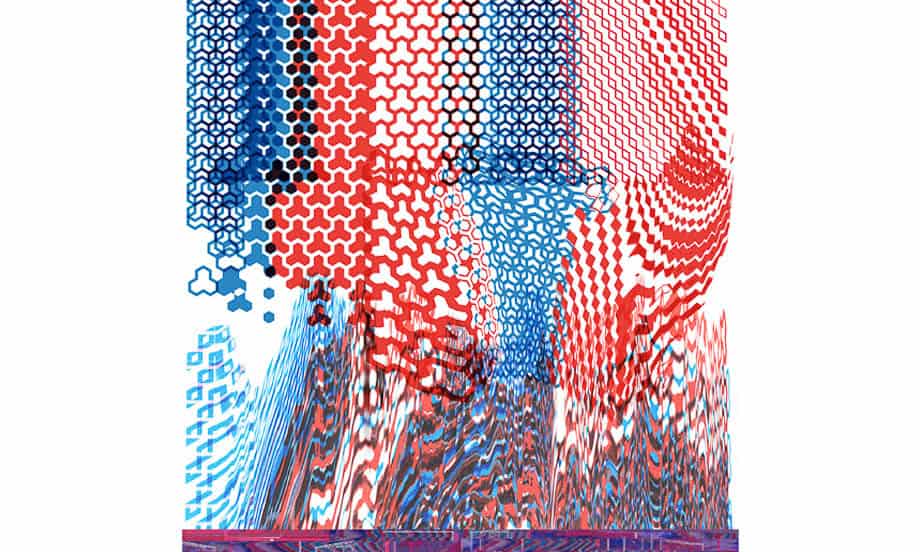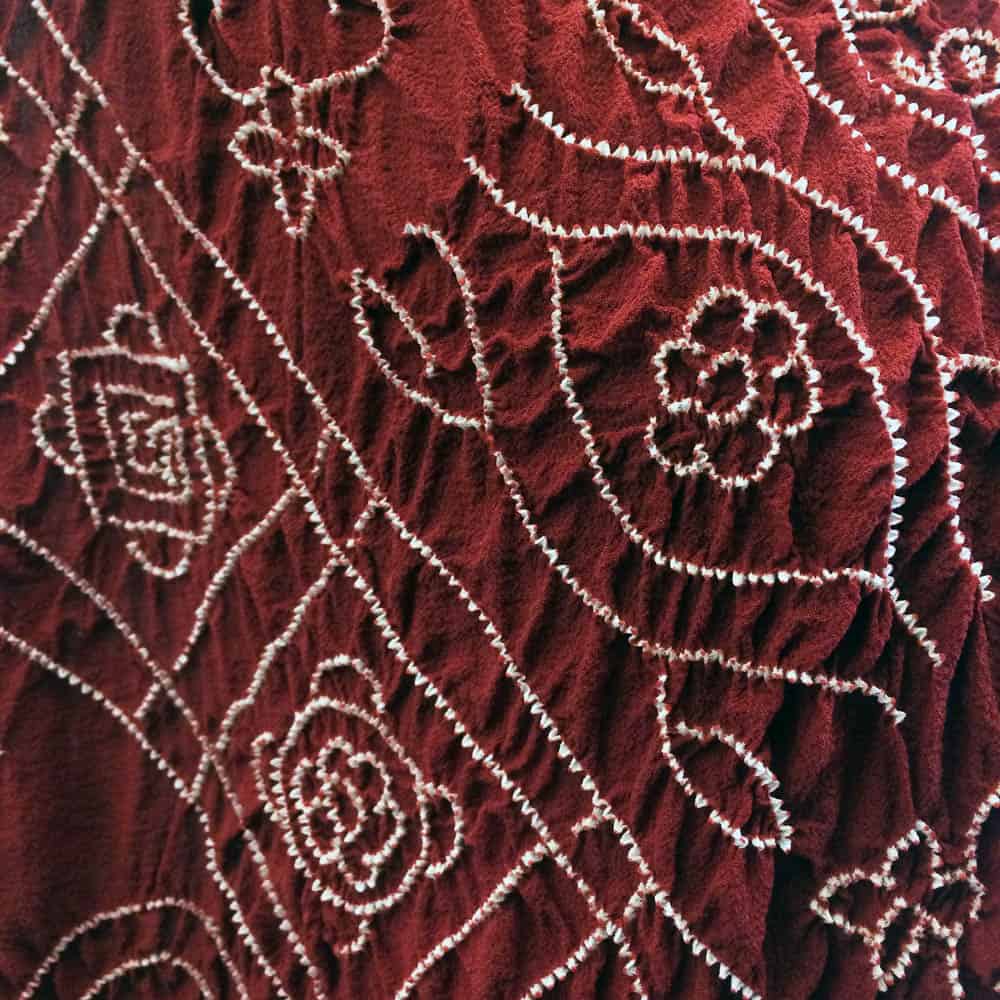- India Street in the Vale of Leven, West of Scotland, is a charming terrace that backs onto a derelict factory site.
- Textile by Raw Mango (Sanjay Garg) wiht Gayfield.
- Textile print by Emlyn Firth
India Street Bazaar returns to its roots as unique designs are showcased in Mumbai (4 – 11 Nov) and Ahmedabad (11 – 26 Nov) alongside a programme of events exploring slow fashion and design collaboration. India Street Bazaar compares Scotland’s lost textile industry and India’s thriving crafts, taking the history of the former Turkey Red Industry as a starting point. Design curator Katy West invited designers from India and Scotland to explore the Turkey Red archives, and respond aesthetically, and with hindsight, to the fabrics, their colours, patterns and motifs. Each of the products produced reflects our position in relation to business models, ethics of production, fashion and taste.
Coinciding with the 70th anniversary of Indian independence this exhibition explores the inspiration behind each of the designs, and how the products were made. The India Street Bazaar aims to highlight the importance of sustainability, looking at how contemporary designers can work ethically in our global, digital age.
Turkey Red came from natural Alizarin extracted from the Rubia Cordifolia plant, known as madder root. After extraction, the dye was fixed to the cloth using oil and alum mordants. This complex and lengthy process, widely used during the nineteenth century, produced a luminous red which did not fade with exposure to sun or frequent washing. The invention of a chemical Alizarin using anthracene in 1868 greatly diminished the use of the natural compound. Traditional knowledge was lost. The stories that emerge in the India Street Bazaar collections are of the re-discovery of madder.
While drawing inspiration from the Turkey Red industry, the artisans have also discovered their own histories. Designers featured include celebrated textile designer Laura Spring, world-renowned clothing collective People Tree, leading design director Emlyn Firth, textile artist and researcher LOkesh Ghai, fashion illustrator Charlotte Linton, celebrated designer and founder of fashion label Raw Mango Sanjay Garg and award-winning designer Gabriella Marcella. Together these designers have created vibrant scarves, shirts, t-shirts, cotton shoppers and day and night pyjamas in a collection that unites Scotland’s industrial textile history with the Indian designs and patterns it sought to replicate.
The exhibition has recently finished a Scottish tour and is now set to return to the starting point of the project in Ahmedabad where the Scotland based designers first met their Indian counterparts 3 years ago to develop their commissions. Scotland India Street in the Vale of Leven, West of Scotland, is a charming terrace that backs onto a derelict factory site. This site was once the home to a global textile industry, Turkey red, whose main market was India. Turkey red is the name given to a naturally dyed cloth; a foul, costly and complex process involving extracting red dye from the madder root. As well as brilliant, cloth dyed with Turkey red was extremely durable and did not fade in water or light. See www.indiastreetbazaar.net for a list of events.
The Mumbai edition is a counterpoint in response to the story of nineteenth-century Turkey Redartefactss, through the eyes of designers and artisans using traditional Indian textile techniques. “The Mumbai edition of India Street Bazaar at ARTISANS’ brings the contemporary story of madder in India up to date. The project uncovers a crucial aspect of the practise of natural madder dye where it was once prevalent. Many artisans who switched to the easier-to-use chemical Alizarin, wrestled with the challenge to relearn traditional dye recipes. I hope this will ignite a Red Revolution and the revival of Indian Madder.” says Radhi Parekh, Founder Director ARTISANS’.
Some examples of work:
Indigene’s Ruchi Tripathi and Jaya Bhatt are textile designers who work intensively with artisans to champion sustainable fashion. The inspiration for this collection originates from the craft of quilting and patching that reference the handmade quilts produced in 19th century America using imported Turkey red fabric. This textile centric collection features non-structured, free-size jackets, kimonos and overlays in patch-work and textured surfaces accompanied with patched/embroidered artworks, scarves and pouches. Indigene interprets the print motifs from the geometric elements of the Turkey red prints. Their prints depict box like patterns inspired by the linear borders, diamond and polkas, which were very much a part of the Turkey red design element. The diamond form is a set of smaller square dots together creating a checker-board pattern, the linear forms represent borders with triangular forms set inside, used extensively in the quilts made with the Turkey red fabric leftovers in North America.
Fahd Khatri rediscovered his family’s traditional craft of resist-dyeing, Bandhani, as an adult. Fahd Khatri referenced the imitation ‘Bandhani’, roller-printed polka dot patterns found in the 19th century Bombay Sample Book. These cotton squares in their distinctively deep red came to be known as ‘bandanas’. Khatri plays with the size of dots, hand-tied by members of his family, such as no machine can recreate. Many Khatris have abandoned natural madder and switched to chemical Alizarin. Fahd Khatri’s rediscovery of madder dye is expressed in the experimental tints of red he has achieved. He incorporates the natural colours of indigo, black, yellow and green. Khatri’s collection is a personal journey to revive madder red, and master the mordanting process once again.







